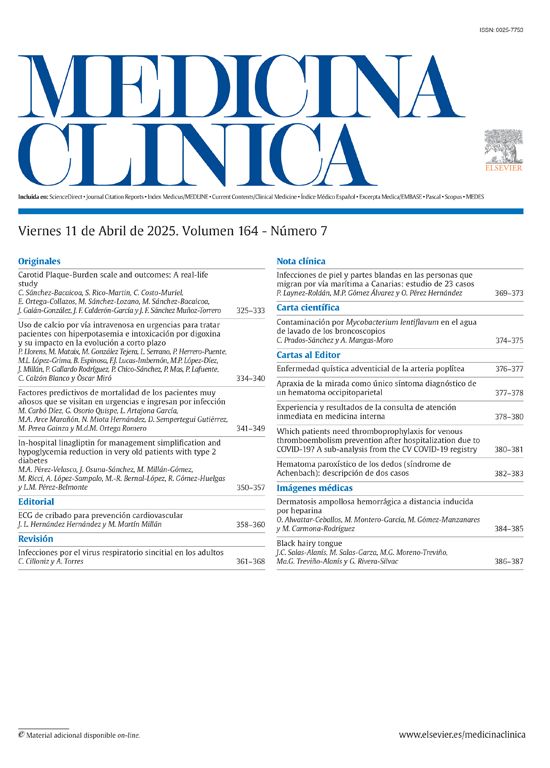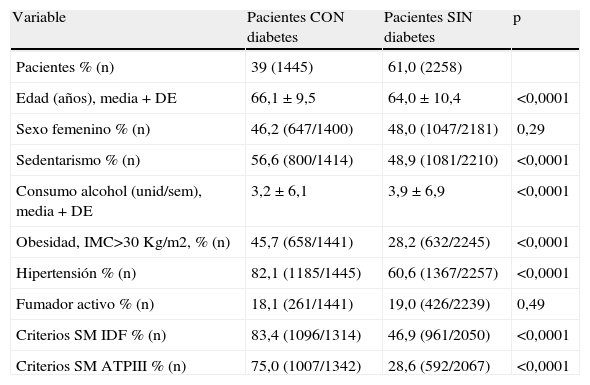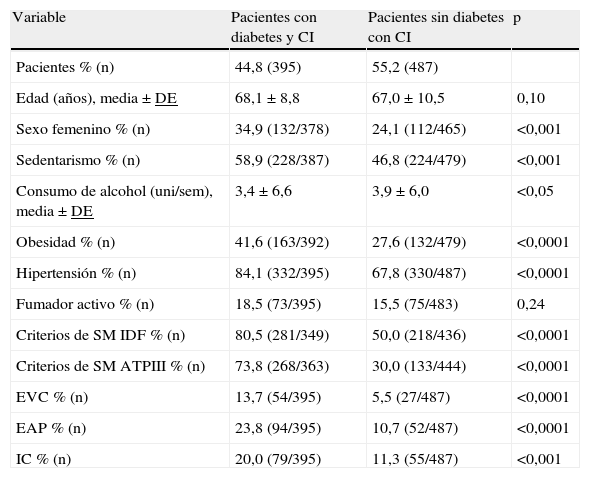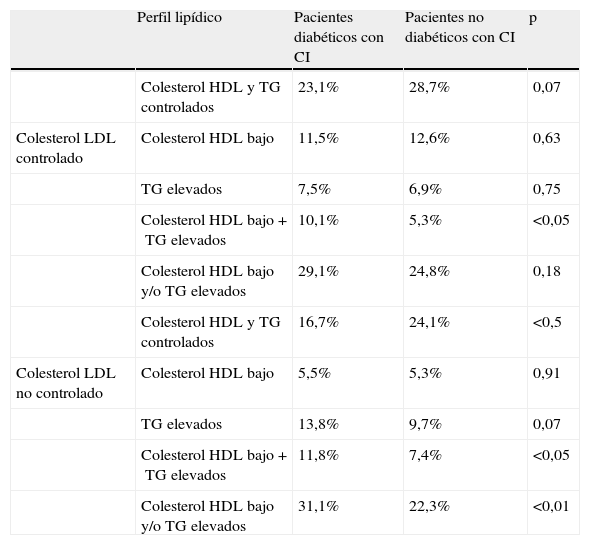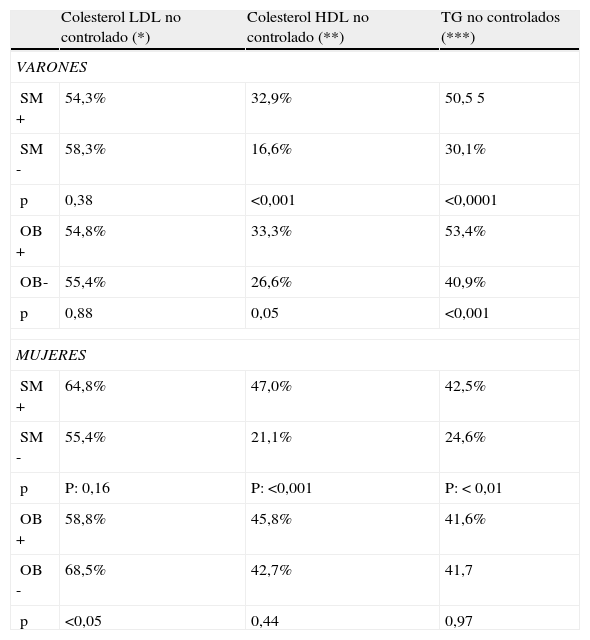La diabetes mellitus tipo 2 (DM2) se asocia con un elevado riesgo cardiovascular (RCV), siendo de gran importancia tratar intensivamente los distintos factores de RCV, como la dislipemia. El tratamiento hipocolesterolemiante es necesario para conseguir reducir el RCV asociado a la DM2, siendo el colesterol unido a lipoproteínas de baja densidad (colesterol LDL) el principal objetivo terapéutico. En este trabajo se analiza el perfil lipídico de pacientes diabéticos en tratamiento con estatinas.
Pacientes y métodoEl estudio DYSIS (Dyslipidemia International Study) es un estudio observacional, internacional, en el que se analiza el perfil lipídico de pacientes tratados con estatinas, en prevención primaria o secundaria.
ResultadosDe los 3703 pacientes analizados, el 39% eran diabéticos. El 59,2% de los diabéticos presentaban el colesterol LDL fuera de control. En conjunto, el 43,6% de diabéticos presentaba triglicéridos elevados y el 36,4% tenían el colesterol unido a lipoproteínas de alta densidad (colesterol HDL) bajo. De los pacientes con cardiopatía isquémica y diabetes, el 31% tenían colesterol LDL, colesterol HDL y triglicéridos fuera de control. De los pacientes diabéticos con síndrome metabólico el 60% tiene el colesterol LDL fuera de objetivos, el 39,8% tienen el colesterol HDL bajo y el 46,6% triglicéridos elevados. El 57% de los pacientes diabéticos obesos presentaba falta de control del colesterol LDL, aún en tratamiento con estatinas.
ConclusionesLas enfermedades cardiovasculares son la primera causa de morbimortalidad en pacientes con DM2. El estudio DYSIS muestra que la mayoría de los pacientes tratados con estatinas no alcanzan los objetivos lipídicos recomendados por las guías. En el presente estudio se constata que más de la mitad de los diabéticos tratados con estatinas tiene el colesterol LDL fuera de control, el grado de control de la dislipemia es muy limitado a pesar del tratamiento con estatinas, lo que puede determinar la necesidad de una terapia combinada para el tratamiento eficaz de la dislipemia diabética.
Type 2 diabetes mellitus (DM2) is characterized by carrying a high cardiovascular risk. This situation underscores the importance of intensively treating the risk factors present in diabetic patients, notably dyslipemia. The treatment with cholesterol-lowering drugs may be especially effective to reduce the cardiovascular risk in diabetic patients. Therefore, LDL-cholesterol is a priority target in the lipid management of these patients. This study analyzes the alterations in the lipid profile of diabetic patients receiving treatment with statins, which therefore may contribute to persistent cardiovascular risk in such individuals.
Patients and MethodsThe DYSIS (Dyslipidemia International Study) is an international, observational trial analyzing the lipid profile of patients treated with statins and followed-up on in outpatient clinics by primary care physicians and specialists. This study is referred to the data on the diabetic patients.
ResultsOf the total patients enrolled in the DYSIS, the present study included 3703 patients, 39% being diabetics. A total of 59.2% of diabetics showed LDL-C out of goal; triglyceride elevation was observed in 43.6% and 36.4% showed low HDL-C. In diabetics patients with coronary heart disease, 31% had uncontrolled levels of all three lipid parameters. The prevalence of out of goal LDL-C in diabetic patients with metabolic syndrome was close to 60%; 39.8% had low levels of HDL-C and 46,6% high levels of triglycerides. In addition, 57% of diabetic patients with obesity showed LDL-C out of control, despite statins treatment.
ConclusionsCardiovascular diseases remain the main cause of morbidity-mortality in patients with DM2. The results of the present study show that in diabetic patients the degree of control is very limited with regard to LDL-cholesterol. More than half of diabetic patients treated with statins had LDL-cholesterol out of goal. The level of dyslipidemia control was low, despite statins treatment. Therefore, the detection of atherogenic dyslipidemia may point to the advisability of using combination therapy for dyslipidemia in diabetic patients.




